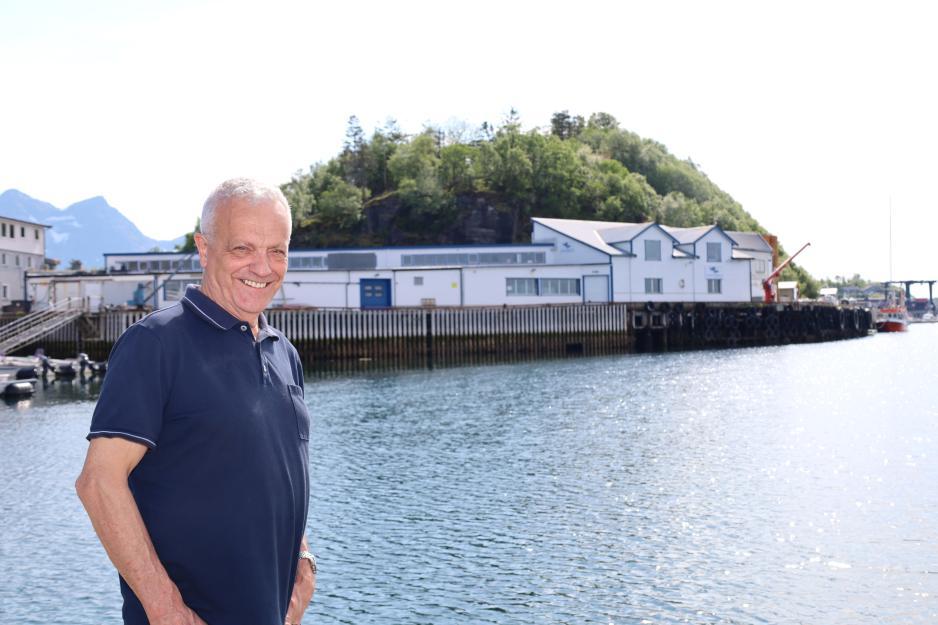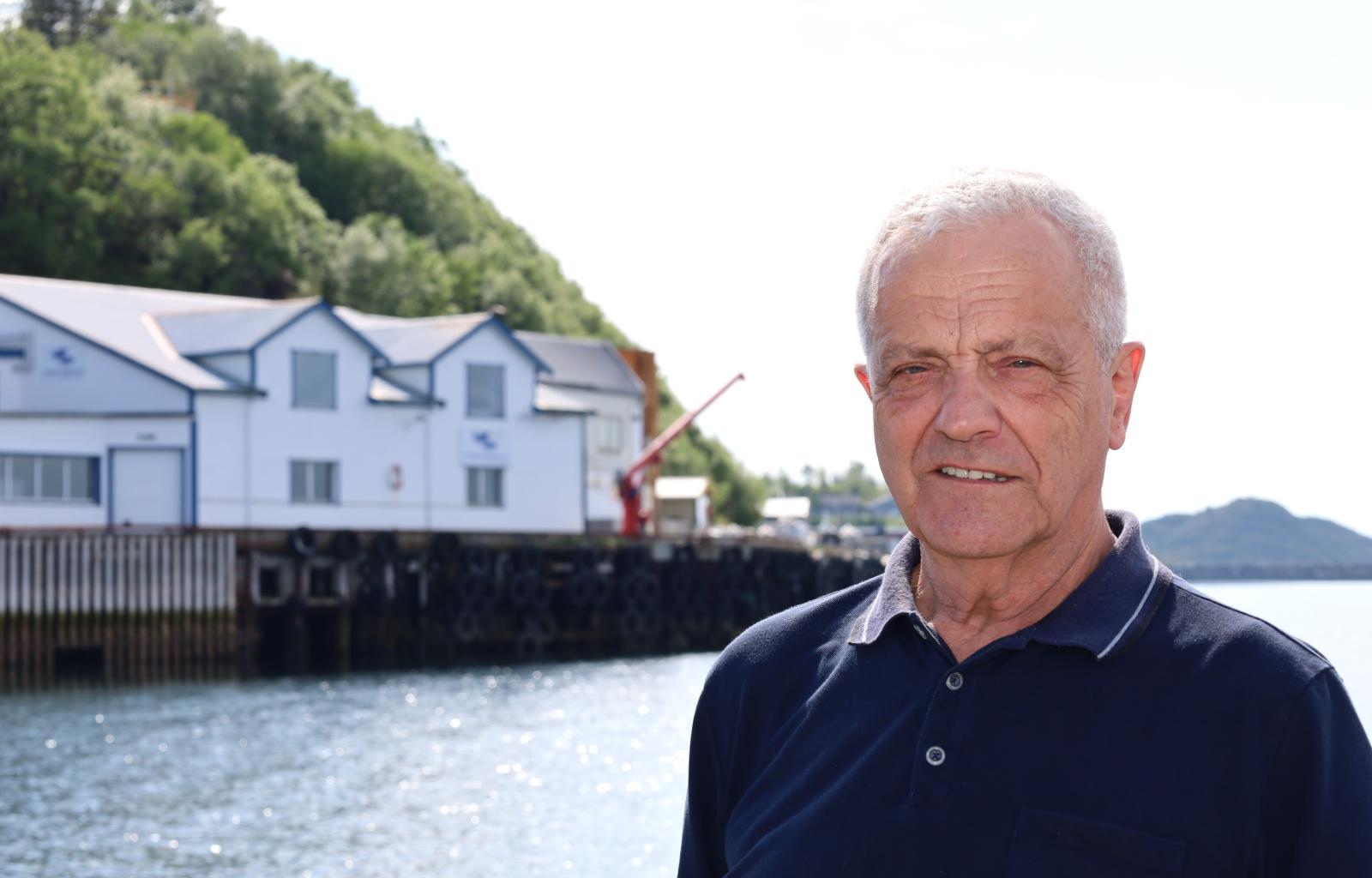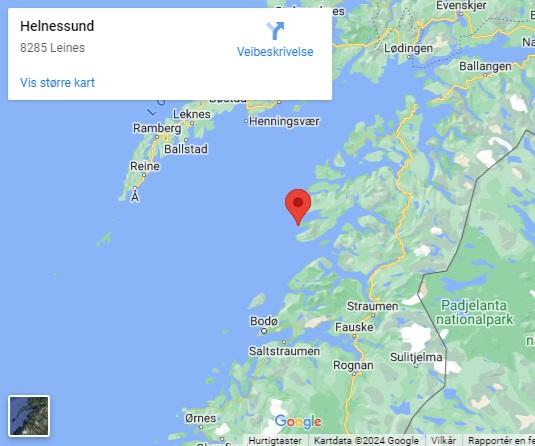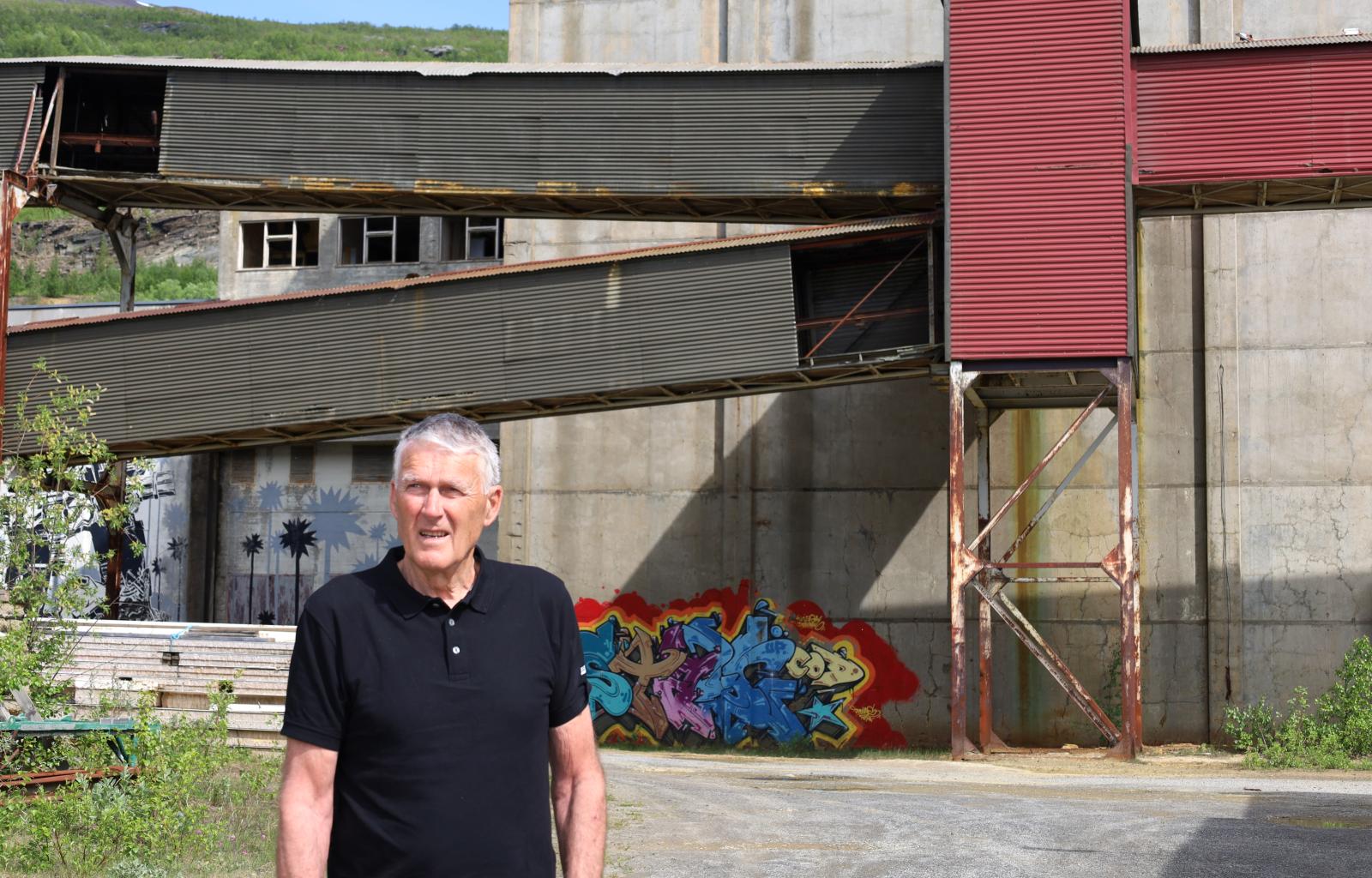Life on the Arctic Coast: Arild Manages Some of the Few Remaining Fish Landing Sites in Salten
High North News (Helnessund): The manager of Steigen Sjømat, Arild Aasjord (78), says fewer and fewer boats deliver fish to the company's landing sites in Steigen, Northern Norway. "If the fishery industry is to survive here, we must recruit more young people to the fisheries," he says.
"The number of fishing vessels that deliver to us has been nearly halved over the past twenty years, and the number of boats in the region continues to decrease. If we still want fisheries here, we must recruit young people."
The statement comes from Arild Aasjord, the manager of Steigen Sjømat [Steigen Seafood, ed. translation]. He is sporting an uplifting smile as he looks out of his office window on the top floor of Helnessund Brygger.
High North News met him in the idyllic old fishing village Helnessund in Steigen municipality in Northern Norway. The production premises of Steigen Sjømat, of which Aasjord has been manager since 1992, are located on the dock and can be traced back to his great-grandfather's generation.
Aasjord says he is a handyman in the village, located by the massive Vestfjord. In addition to managing the fish landing site, he manages the coastal hotel Helnessund Brygger, which is on the cusp of a busy tourist and summer season.
Back to the family business
Steigen Sjømat was established in 2006 and is an extension of the company Brødrene Aasjord, established in 1920 by Aasjord's great-grandfather. His five sons engaged in fishing, catching, and trade.
In the 1970s, the grandfather generation stepped out of the business. Arild Aasjord joined the new board and became chairman in 1976. This while running a car business in Bodø.
"I started as a fisherman before moving south to become an electrical engineer. Afterward, I moved to Bodø and had several jobs, including starting two car businesses," he says.
14 years after taking on the role of chairman, Aasjord returns to Helnessund, now as the business's manager.
"I was initially just going to work here for a year, so I took leave from my job in Bodø. This was in 1992," he says and takes a short break:
"Since then, I have commuted weekly between Bodø and Steigen. We have a house in both places, my wife and I. I am retired but have not had time to be that yet."
Main owners in Røst in Lofoten
In 2006, several changes happen as the business reorganizes. Brødrene Aasjord is liquidated and the current Steigen Sjømat is established. At this time, the owners of Røst Sjømat from the island Røst in Lofoten also become owners of the company.
"They are wonderful co-owners, and we particularly cooperate when it comes to sales," says Aasjord.
"We had some debt with the old company, but we have no debt now, and the company is run relatively well; it has made a profit every year since 2007."
Keeping landing sites in Northern Salten going
Steigen Sjømat consists of production facilities and landing site on the dock in Helnessund, as well as four other landing sites in Steigen and one in Sørfold. This is one of the few remaining fish landing sites in Northern Salten, the region north of Bodø.
"The fjord systems in the area are big and it is a long way for fishing vessels to come here to Helnessund. We therefore pick up the fish landed at the landing sites with trucks and drive it here. A typical catch could be mostly pollock, some halibut, cod, redfish, and monkfish; a variation of fish gets sorted and packed here at the main facility."
"I sometimes also drive the car we use to pick up the fish," he says.
There are three employees in Steigen Sjømat, in addition to a small administration.
The two main businesses that Aasjord operates in Helnessund are Steigen Sjømat and Helnessund Brygger (pictured). Steigen Sjømat is open in the fall, winter, and spring. Helnessund Brygger was established in 2005 and is a tourism business. (Photo: Hilde-Gunn Bye)
The company receives between 350 and 400 tonnes annually. Most of the income comes from the halibut and pollock.
"We don't receive that many kilos, but it is valuable fish. We have a very good halibut area in Steigen-Hamarøy and Sørfold. In the past years, a lot of the halibut has been sent to the USA in big boxes on special-made pallets via air. There has been a very good market there, and we have good cooperation with our exporter," explains Aasjord.
Otherwise, the operation involves salting and packing fresh fish, most of which is sent by high-speed ferry to Bodø and southward by trailer, train, or Hurtigruten.
"We mostly have pollock and salt almost 100 percent of it. In this area, we cooperate with Røst Sjømat, and much of the salted fish is exported to Canada, where it is dried before further sale. The little cod we get usually ends up in Portugal."

Cooperation with the local fishers is essential, says the manager of Steigen Sjømat, Arild Aasjord. (Photo: Hilde-Gunn Bye).

A lot of the salt fish that Steigen Sjømat produces is exported to Portugal, among other places.
Fewer boats docked
You don't get much cod here, do you? How have the winter fisheries been for you?
"There is little winter fisheries here. The skrei [Northeast Arctic cod, journ. note] does not come in here to any particular extent," he says
In this area, the skrei have traditionally migrated toward the spawning grounds on the other side of Vestfjorden, by the Lofoten Islands.
"We have fishers here with cod quotas, but they are naturally interested in fishing the quota and often go north to meet the skrei in Troms. They usually fish their quotas quite quickly at Breivikbotn [often called 'Little Lofoten,' ed. note]," he laughs.
"Then they can return and continue their fisheries for pollock and other fish in the fjords here."
How has the fisheries activity changed throughout the years?
"If we go back 20 years, the number of fishing vessels delivering to us has been halved. Around the year 2000, there were perhaps 60 active fishing vessels here, but now there are under half."
Aasjord says that there are currently around six fishing vessels in Helnessund, while the rest are around the landing sites. There are about 25 registered active fishers, some more active than others. The fisheries in the area are diminishing, and there are fewer and fewer boats in the region. That also means the amount of fish delivered to the company's landing sites is decreasing.
"A short time ago, we closed the landing site here in Helnessund until August 1st, which has been the norm for many years. There are too few deliveries at this time of the year. Most of the fishers have been cod fishing and have fulfilled their quotas. Some start halibut fishing, but many stay home or go on holiday."
Protects the village
Cooperation with the remaining fishers is of great significance, but Aasjord also welcomes boats from other places to Helnessund.
"Last season, a couple of people from Møre stayed here and did some good fishing. We are very grateful for such foreign boats and try to welcome them as well as we can. We have a breakwater and another fishing dock where they can stay. They can lie safe and well here, and there are good fishing grounds around here," he says.
Many fish landing sites are currently temporarily laying off employees. What are your thoughts on that?
"Fish landing sites are closed down one after the other along the coast. There is varying activity at several of our landing sites, while one of the stations receives quite little. As said, we are partly dependent on foreign boats, but also on the local fishers being home and delivering fish. In Sørfold, we have a large fishing vessel that practically "protects" the landing site and the village by actively fishing and delivering there."
"Not just us with these problems"
"We must be able to recruit some new fishers, and we have an ongoing cooperation with Steigen municipality, where we try to light a spark in the youth. If the fishery industry is to survive here, we must recruit more young people to the fisheries," he specifies and adds:
"But we are not the only ones having this problem. This applies to many local communities."
He believes that some of the problem stems from the raw material being mostly caught by big boats and from the large amounts of fish being delivered frozen on land.
What worries you about the fisheries policy?
"What happened a couple of decades back, which is tradable quotas."
According to the 2020 report of the Office of the Auditor General of Norway, the most important change in the quota system from 2004 to 2018 was the establishment of a particular quota regulation, which made it possible to collect several quotas on one vessel.
This has created greater profitability in the industry. At the same time, several negative consequences for coastal communities have also been pointed out. The fleet structure has become less varied and the vessels are fewer and larger, among other things.
"Of course, the fishing fleet has been renewed to more modern vessels, but that is not all. There are fewer and fewer jobs and fewer inhabitants, and the raw material is often frozen on board the big boats, and you don't see a trace of it on land. The small landing sites are based on small vessel fishing," says Aasjord.
"Many small vessel fishers here have a good income, but they also work hard. And they must have a landing site," he concludes.
This article is part of High North News' series of reports about life on the Arctic Coast. Feel free to share your tips with our journalist Hilde Bye.






